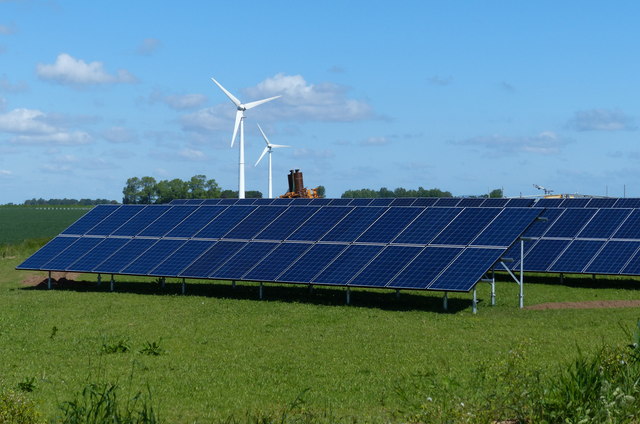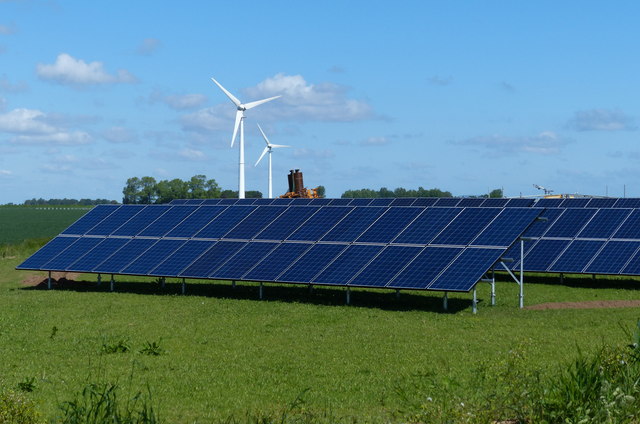
Mat Fascione
The paper released on Thursday night by Deloitte notes that "renewable energy sources, in particular solar and wind, have almost reached parity in price and productivity compared to traditional ones both in centralized energy grids and outside them ". The report identifies seven main trends in the process of global transformation of renewable energy.
The first of these is "achieving parity in price and productivity." It is noted that renewable energy in most countries of the world has become cheaper or equal in value with fossil fuels. New ways of accumulating and conserving energy facilitate management of renewable energy sources (RES), which in its time was considered an advantage of traditional sources.
The second trend is "economical and reliable integration of grids". Earlier, it was formerly believed that solar and wind energy cause a heterogeneous load on the grid. Now, however, connection of such power plants to the power grid appears to be a solution to the load balancing problem. These energy sources have demonstrated that it is possible to enhance stability and reliability of the grid and provide the necessary network services.
Deloitte says that the third important factor characterizing current development of renewable energy is the impact of technological progress. Thanks to this, "the introduction of renewable energy sources is accelerating; automation and the latest industrial equipment make it possible to increase efficiency of production and use of renewable energy sources by reducing cost and time of their introduction... Thanks to advanced materials, it became possible to convert the energy of solar panels and wind turbines."
As for other trends in the world renewable energy market, Deloitte refers to growing popularity of renewable energy in major cities. 33% of the energy consumed in San Diego is already produced from renewable sources, in Los Angeles and Indian Jaipur - 20%, Hamburg - 15%, Toronto - 12%. Development of public ownership of grids and renewable energy sources also accelerates development of this industry. So, for example, authorities of Denmark in every way encourage creation of cooperatives and other types of collective ownership of wind and solar installations in rural areas.
Another important trend in Deloitte is active participation of developing countries in distribution of renewable energy. First of all, this applies to China. Eight of the world's top ten suppliers of solar batteries are Chinese. Only from 2015 to 2017, China invested $ 2.2 billion in solar and wind projects in 11 other developing countries; at the same time, it received investments of $ 1.3 billion from investors from 13 countries.
The seventh trend in the report refers to growing participation of the corporate sector in development of renewable energy. Only in 2017, 465 TWh of electricity from renewable sources were received thanks to participation of corporations, their capital and other forms of cooperation.
"The large-scale integration of renewable energy sources is just a matter of time," says Marlene Motyka, head of the international group for renewable energy services at Deloitte. "Countries like China, the United States and Germany have already reached parity in prices for some renewable sources energy. As prices continue to fall, the ability to integrate renewable energy into their energy systems to ensure a competitive advantage is obtained by both developed and developing countries."
source: deloitte.com
The first of these is "achieving parity in price and productivity." It is noted that renewable energy in most countries of the world has become cheaper or equal in value with fossil fuels. New ways of accumulating and conserving energy facilitate management of renewable energy sources (RES), which in its time was considered an advantage of traditional sources.
The second trend is "economical and reliable integration of grids". Earlier, it was formerly believed that solar and wind energy cause a heterogeneous load on the grid. Now, however, connection of such power plants to the power grid appears to be a solution to the load balancing problem. These energy sources have demonstrated that it is possible to enhance stability and reliability of the grid and provide the necessary network services.
Deloitte says that the third important factor characterizing current development of renewable energy is the impact of technological progress. Thanks to this, "the introduction of renewable energy sources is accelerating; automation and the latest industrial equipment make it possible to increase efficiency of production and use of renewable energy sources by reducing cost and time of their introduction... Thanks to advanced materials, it became possible to convert the energy of solar panels and wind turbines."
As for other trends in the world renewable energy market, Deloitte refers to growing popularity of renewable energy in major cities. 33% of the energy consumed in San Diego is already produced from renewable sources, in Los Angeles and Indian Jaipur - 20%, Hamburg - 15%, Toronto - 12%. Development of public ownership of grids and renewable energy sources also accelerates development of this industry. So, for example, authorities of Denmark in every way encourage creation of cooperatives and other types of collective ownership of wind and solar installations in rural areas.
Another important trend in Deloitte is active participation of developing countries in distribution of renewable energy. First of all, this applies to China. Eight of the world's top ten suppliers of solar batteries are Chinese. Only from 2015 to 2017, China invested $ 2.2 billion in solar and wind projects in 11 other developing countries; at the same time, it received investments of $ 1.3 billion from investors from 13 countries.
The seventh trend in the report refers to growing participation of the corporate sector in development of renewable energy. Only in 2017, 465 TWh of electricity from renewable sources were received thanks to participation of corporations, their capital and other forms of cooperation.
"The large-scale integration of renewable energy sources is just a matter of time," says Marlene Motyka, head of the international group for renewable energy services at Deloitte. "Countries like China, the United States and Germany have already reached parity in prices for some renewable sources energy. As prices continue to fall, the ability to integrate renewable energy into their energy systems to ensure a competitive advantage is obtained by both developed and developing countries."
source: deloitte.com


















